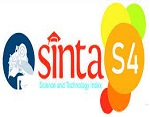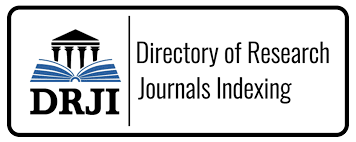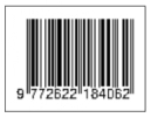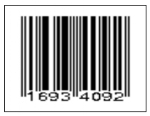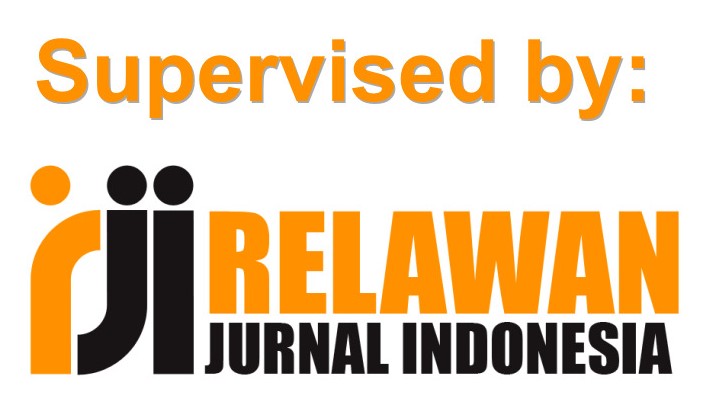Pengaruh Kompensasi Material Dan Immatrial Terhadap Produktivitas Kerja Karyawan Pada PT. Pelabuhan Indonesia ( Persero ) Regional 2 Palembang
DOI:
https://doi.org/10.31851/jmwe.v21i4.18059Abstract
ABSTRAK
Penelitian ini bertujuan untuk menguji hipotesis Pengaruh Kompensasi Material dan Immaterial Terhadap Produktivitas kerja karyawan pada PT.Pelabuhan Indonesia (Persero) Regional 2 Palembang. 46 pekerja di PT. Pelabuhan Indonesia (Persero) Regional 2 Palembang menjadi populasi penelitian. Dengan pertimbangan bagi para pekerja PT. Pelabuhan Indonesia (Persero) Regional 2 Palembang yang dibagi menjadi beberapa subdivisi yang berbeda (tidak semuanya sama jenisnya sehingga diambil hasilnya sebagai sampel yang representatif dari masing-masing subdivisi), maka digunakan teknik pengambilan sampel adalah Prospectionate Stratified Random Sampling. Ada 46 responden di seluruh sampel. Analisis regresi linier berganda dan pengujian koefisien determinasi (R2) digunakan dalam pendekatan analisis data penelitian. Produktivitas kerja merupakan variabel independen, begitu pula ketersediaan material dan kompensasi material. Berdasarkan hasil uji hipotesis produktivitas kerja karyawan PT. Pelabuhan Indonesia (Persero) Regional 2 Palembang tidak terpengaruh secara signifikan secara simultan (simultan) oleh variabel independen berupa upah material dan immaterial.
Kata Kunci: Kompensasi material dan immaterial, produktivitas kerja.
ABSTRACT
This research aims to test the hypothesis of the influence of material and immaterial compensation on employee work productivity at PT. Pelabuhan Indonesia (Persero) Regional 2 Palembang. 46 workers at PT. Port Indonesia (Persero) Regional 2 Palembang is the research population. With consideration for PT. Port of Indonesia (Persero) Regional 2 Palembang which is divided into several different subdivisions (not all of the same type so the results are taken as a representative sample from each subdivision), the sampling technique used is Prospectionate Stratified Random Sampling. There were 46 respondents in the entire sample. Multiple linear regression analysis and testing of the coefficient of determination (R2) are used in the research data analysis approach. Work productivity is an independent variable, as are material availability and material compensation. Based on the results of the hypothesis test of employee work productivity at PT. Port Indonesia (Persero) Regional 2 Palembang is not significantly affected simultaneously (simultaneously) by the independent variables in the form of material and immaterial wages.
Keywords : Material and immaterial compensation, work productivity
References
Bangun, W. (2012). Manajemen sumber daya manusia. Bandung Penerbit Erlangga.
Dharmawan. (2011). Pengaruh Kompensasi dan Lingkungan kerja non Fisik terhadap kinerja karyawan Hotel Nikki Denpasar. Tesis. Universitas Udayana Denpasar Bali
Hasibuan, M. (2011). Manajemen sumber daya manusia. Jakarta: Pt Bumi Aksara
Irawati, Suwendra, Yulianthini. (2014) Pengaruh kompensasi finansial dan non finansial terhadap produktivitas kerja karyawan ppada UD Merta Abadi. E-Jurnal Bisma Universitas Pendidikan Ganesha Jurusan Manajemen Vol.2 Tahun 2004
Kasmir. (2019). Manajemen sumber daya manusia (Teori dan Praktek) Depok: PT. Raja Grapindo Persada.
Mondy, R. Noe (1993). “Human Resource Management” Massachusetts: Allyn and Bacon.
Sugiyono. (2019). Metode Penelitian’Kuantitatif, Kualitatif, dan R&D. Bandung: Alfabeta
Viddy, (2020) Pengaruh Kompensai finansial dan non finansial Terhadap Kepuasan kerja dan Kinerja Karyawan Papa PT. Cindara Pratama Liner Balikpapan
Yusuf, B, (2016). Manajemen sumber daya manusia Jakarta : PT. Rajagrafindo Persada
Downloads
Published
Issue
Section
License
Copyright (c) 2025 Jurnal Media Wahana Ekonomika

This work is licensed under a Creative Commons Attribution-NonCommercial 4.0 International License.
The copyright of the received article shall be assigned to the publisher of the journal licensed under a Creative Commons Attribution-NonCommercial 4.0 International License in line with the license, authors and any users (readers and other researchers) are allowed to share and adapt the material only for non-commercial purposes. In addition, the material must be given appropriate credit, provided with a link to the license, and indicated if changes were made. If authors remix, transform or build upon the material, authors must distribute their contributions under the same license as the original.


